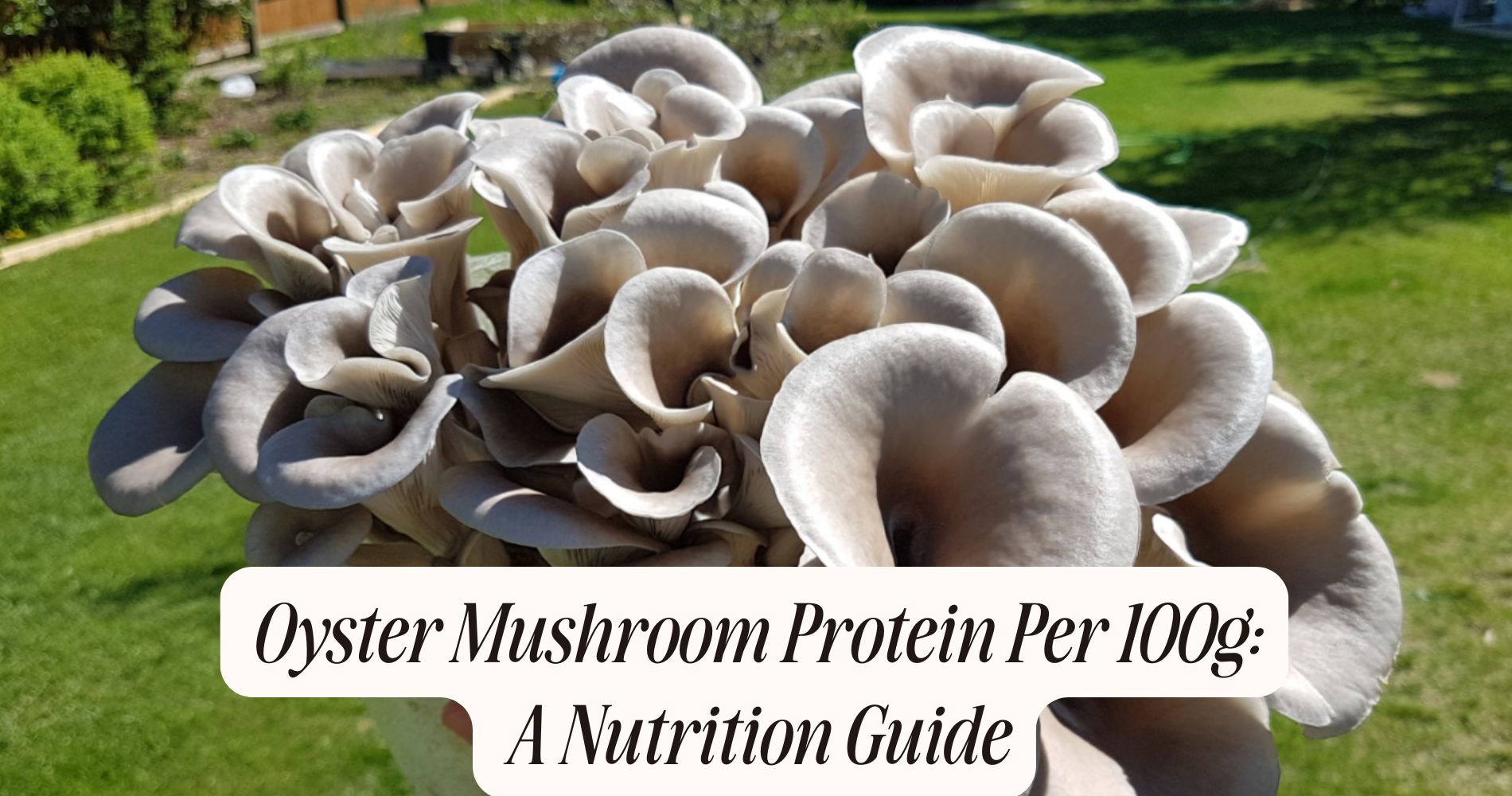
Are Mushrooms High in Fiber? Nutrition Facts
Are mushrooms high in fiber? Mushrooms aren't the highest in fiber, but they do contribute meaningfully to your diet with both soluble and insoluble fibers. They're rich in essential nutrients like B-vitamins and antioxidants while remaining low in calories. White button mushrooms are great for digestion thanks to their insoluble fibers, while shiitake mushrooms support heart health. Adding them to your meals not only enhances nutrition but also provides texture and flavor, offering more details beyond the basics.
Understanding the Fiber Content in Mushrooms
Mushrooms are often overlooked as a source of dietary fiber, yet they provide a unique blend of both soluble and insoluble fibers. When you consider fiber sources, mushrooms stand out due to their diverse types, each offering distinct fiber benefits.
For instance, shiitake mushrooms contain beta-glucans, a soluble fiber that supports heart health by lowering cholesterol levels. Meanwhile, white button mushrooms are rich in insoluble fibers that aid digestion and prevent constipation.
Including a variety of mushroom types in your diet can optimize your fiber intake without overhauling your meal plan. Try adding them to salads, soups, or stir-fries.
Nutritional Profile of Common Mushroom Varieties
As you explore the benefits of fiber in mushrooms, it's equally important to understand the broader nutritional profile of these versatile fungi.
Common mushroom varieties like white button, cremini, and portobello offer diverse nutrients beyond fiber. They're low in calories, making them an excellent addition to any diet. These varieties are rich in B-vitamins, which support energy metabolism, and contain essential minerals like selenium and potassium, vital for overall health.

In terms of culinary uses, mushrooms are incredibly adaptable. You can sauté them for a savory dish or add them to soups and salads for texture and flavor.
Their nutritional benefits combined with culinary versatility make mushrooms a practical choice for enhancing your meals while boosting your nutrient intake.
Health Benefits of Including Mushrooms in Your Diet
While adding mushrooms to your diet, you'll discover numerous health benefits that go beyond their delicious flavor. Rich in essential nutrients, mushrooms support overall health by boosting your immune system. They contain antioxidants like selenium, which protect your cells from damage and reduce inflammation.
The dietary benefits of mushrooms also include a low-calorie profile, making them ideal for weight management.
Mushrooms provide B vitamins such as riboflavin and niacin, which are vital for energy metabolism. Additionally, their vitamin D content can enhance bone health, especially if you're exposed to sunlight.
The fiber in mushrooms aids digestion and promotes gut health. Including mushrooms in your meals can thus contribute greatly to your well-being, enhancing mushroom health benefits in your everyday diet.
Comparing Mushrooms to Other Fiber-Rich Foods
When you're comparing mushrooms to other fiber-rich foods, you'll find that each offers unique nutritional benefits.
Mushroom varieties like shiitake and portobello provide around 1 gram of fiber per cup, which is modest compared to foods like lentils or broccoli. For a practical fiber comparison, consider that a cup of lentils has about 15 grams of fiber, while broccoli offers roughly 5 grams per cup.

However, mushrooms bring other nutrients to your plate, such as B vitamins and antioxidants, which complement their fiber content.
So, while mushrooms may not be the highest in fiber, they offer a low-calorie, nutrient-dense option that can round out your fiber intake when combined with other foods.
Balance is key for a well-rounded diet.
Tips for Incorporating Mushrooms Into Your Meals
To boost your meals with the nutritional benefits of mushrooms, consider including them in a variety of dishes. Start by adding sliced mushrooms to your omelets or stir-fries to enhance fiber content without altering the flavor profile considerably.
For meal prep, mushrooms are versatile and pair well with numerous ingredients. Try mushroom recipes like stuffed mushrooms with quinoa or a hearty mushroom soup. These options aren't only nutrient-dense but can be prepared in bulk for convenient meals throughout the week.

For a fiber-rich twist, use mushrooms as a meat substitute in tacos or burgers. Their texture and umami flavor provide a satisfying alternative.
A Tastier Way to Boost Fiber and Focus
Looking to enjoy the fiber-rich benefits of mushrooms in a fun, convenient way? Try SUPER MUSHROOM GUMMIES by Well Gummies. Packed with 10 functional mushrooms—including fiber-friendly varieties—each gum chew delivers a powerful blend that supports digestion, sharpens focus, and boosts immunity. Plus, with a juicy wild berry flavor, they’re as delicious as your favorite candy—without the jitters or crashes. Just pop and go—your gut, brain, and body will thank you.
Frequently Asked Questions
Can Mushrooms Cause Allergies or Intolerances?
You might experience mushroom allergies, leading to symptoms like skin rashes or breathing issues. Intolerance symptoms can include digestive problems. It's crucial to identify your body's reactions and consult a healthcare professional for personalized advice.
How Should Mushrooms Be Stored for Maximum Freshness?
To keep mushrooms fresh, store them in a paper bag or breathable storage containers. Use refrigeration methods to maintain ideal temperature. This prevents moisture buildup, preserving nutrients and extending shelf life. Avoid plastic bags to reduce spoilage.
Are There Any Poisonous Mushroom Varieties to Avoid?
You should avoid toxic mushroom species like the Death Cap and Destroying Angel. Stick to edible varieties such as cremini and shiitake. They provide nutrients without the risk. Always research or consult an expert when foraging.
Do Cooked Mushrooms Have the Same Fiber Content as Raw?
You might wonder if cooked mushrooms retain the same fiber content as raw ones. Cooking slightly reduces fiber due to water loss, but the difference is minimal. Enjoy them cooked for easier digestion and nutrient absorption.
What Are the Best Ways to Identify Wild Mushrooms Safely?
To safely forage wild mushrooms, focus on identifying characteristics like color, shape, and gill patterns. Consult reliable field guides, attend workshops, and never consume unidentified mushrooms. Prioritize nutrient-rich species known to be safe for consumption.
Conclusion
Incorporating mushrooms into your diet is a smart way to boost your fiber intake, though they're not as fiber-rich as some other foods. They provide essential nutrients and can complement other fiber-rich foods like beans or whole grains. By adding mushrooms to salads, stir-fries, or soups, you not only enhance the flavor but also contribute to a balanced diet. Remember, variety is key, so enjoy mushrooms alongside other nutrient-dense options for peak health benefits.




